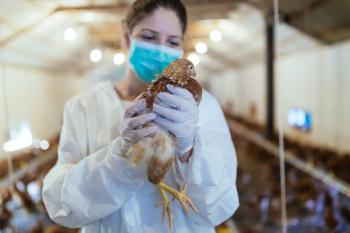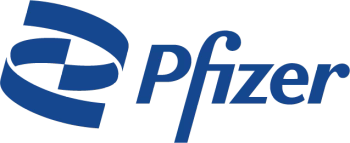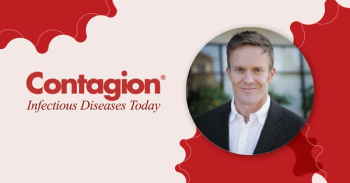
Use of Twitter to Educate and Engage Surgeons in Antimicrobial Stewardship
John Nosta, BA: OK, success with surgeons.
Debra A. Goff, PharmD, FCCP: Yes.
John Nosta, BA: How do you translate that into practical applications in the hospital to really get things done?
Debra A. Goff, PharmD, FCCP: Twitter might be the vehicle to give them a heads-up. “There’s this new drug-resistant infection.” “There’s a link to this article.” I see that translating to changing their behavior and the prescribing of antibiotics in the hospital when I get the culture. We look at the blood culture pathogen, which is positive in a surgical patient. Then I go on the computer screen and see that they’re already on the right antibiotic.
John Nosta, BA: Oh, I see.
Debra A. Goff, PharmD, FCCP: So I know they were able to apply what they learned via Twitter to real-life practice.
John Nosta, BA: How fast do you get that data?
Debra A. Goff, PharmD, FCCP: The culture data? Every day. As soon as we send the culture to the lab, once there’s growth; it takes about 24 hours for the bacteria to grow in the culture bottle. The reports are pumped out in real time. As soon as the culture bottle turns positive, it goes into the computer system and you get alerts. And so, it’s in real-time.
John Nosta, BA: How has your relationship with clinicians and surgeons changed over the near term through the use of Twitter?
Debra A. Goff, PharmD, FCCP: Obviously, I work at The Ohio State University, so I know those surgeons. I don’t know many outside of that because I’m not going to surgical conferences. There’s a key surgeon, Dr. John Alverdy, who is head of surgery at the University of Chicago. I grew up there, and I go back there periodically. We connected. I had a family member who actually ended up in his surgical unit. A surgeon came in. I looked at this gentleman and thought to myself, “Why does he look familiar?” I was like, “Wait a minute.” And so, after he was finished delivering some news about my family member to the rest of my family, he went to leave the room. I said, “Excuse me. Gary, I’m Debbie Goff from Ohio State. We follow each other on Twitter.” It was so comforting. Our family member was very sick. He had cancer, and it was terminal. All of a sudden there was this different connection, because we followed each other on Twitter. We already knew about each other, and now these surgeons were caring for my loved one. It was a really amazing connection. Afterwards, they invited me to spend a day talking to the whole entire surgical department about antibiotic stewardship and how to connect with surgeons. I spoke about what we were doing. So, that all came from Twitter.
John Nosta, BA: In terms of real world solutions, there are 2 things that jump out at me. One is the articulation of data. There’s a link or there’s a paper.
Debra A. Goff, PharmD, FCCP: Yes.
John Nosta, BA: The other is, you are building personal human relationships through electrons.
Debra A. Goff, PharmD, FCCP: Absolutely. So we follow each other. They are very skilled surgeons. They both are really involved in microbiome research, which is fascinating. I’m not an expert in that, but now I know an expert. I actually invited Dr. Alverdy to be a keynote speaker at one of our major meetings. That all came from our connection on Twitter.
John Nosta, BA: When we talk about influence, the chief of medicine is influential.
Debra A. Goff, PharmD, FCCP: Absolutely.
John Nosta, BA: We often have 2 kinds of influencers. One is an out-of-network influencer, and then there is an in-network influencer. For example, if you buy a car, your first stop is to the manufacturer’s website or to some guru who knows a lot about cars. But when you want to buy the car, you go to a trusted expert in your network. Maybe it’s your mechanic. With antimicrobial stewardship, there are people who you build relationships with, who become a part of your internal network. So it’s changing the game a little bit. Your best friend might be on the other side of the country.
Debra A. Goff, PharmD, FCCP: They are. I work in South Africa. I started a mentoring program there many years ago, realizing: How do you do stewardship in resource-limited countries that don’t have enough health care providers? There is the vision of the World Health Organization in regard to physicians as health care providers, but there is this untapped health care force called pharmacists and nurses, and they are higher in number. But they’re not trained in infectious disease; they don’t even have the opportunity. But I can train people. So we started this program, and I taught them how to get on Twitter. If you email me, that dialogue goes between you and me. If you tweet to me, that dialogue goes between the world. And so, I taught the South Africans to jump on Twitter. That’s our best way to stay connected. It is exploding. The world is getting on Twitter. We’re connecting people within the continent of Africa into stewardship because South Africa is much further ahead than the rest of Africa. I have people from Rwanda starting to connect with me. It’s really an amazing vehicle that does not exist any other way.
I do publish papers, but low-, middle-income countries don’t have access to journals that have subscriptions. They generally read their own internal journals, like the South African Journal of Infectious Diseases. They are not seeing what the rest of the world is seeing. Twitter removes all of those barriers. It’s really powerful.
John Nosta, BA: So, it’s a bit of care and a bit of connection.
Debra A. Goff, PharmD, FCCP: Yes, absolutely.
Newsletter
Stay ahead of emerging infectious disease threats with expert insights and breaking research. Subscribe now to get updates delivered straight to your inbox.































































































































































































































































































































